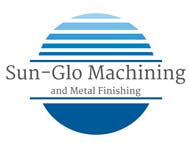From human safety to corrosive chemicals, industrial environments like food processing and electronic manufacturing can be extreme. To minimize risk and ensure maximum safety protocols, industries have some of the most demanding material requirements. It is crucial that the right coating and plating materials are used in the right conditions. Here is a quick guide to industrial metal plating:
What is it?
In 1805, Luigi Brugnatelli, an Italian Chemist, successfully electroplated silver medals with gold. 35 years later, electroplating was also discovered by both Russian and English scientists. It is a process that creates an outer coating of metal on a conductive surface. Industrial metal plating is a critical component in modern technology with a wide range of purposes and methods. Plating techniques include electroplating, chemical and electrochemical conversion, and immersion plating. Other surface technologies are cladding, case hardening, electropolishing, and vapor deposition.
Metal PlatingWhy is it used?
Without industrial metal plating, metal products would last only a fraction of their lifespan because of the huge impact corrosion and wear have. Plating alters the surface of metal products to enhance:
• Corrosion resistance
• Wear resistance
• Electrical conductivity
• Electrical resistance
• Reflectivity and appearance
• Brightness and color
• Torque tolerance
• Solder-ability
• Tarnish resistance
• Chemical resistance
• Ability to bond to rubber
• Hardness
How is it done?
There are typically eight steps in the industrial metal plating process. Depending on the thickness of the plating, these steps can take anywhere from a few minutes to several hours to complete.
1. The first step is to ensure that all surfaces are free of contaminants, so bonding can take place. The necessary parts are suspended in a vat of boiling chemical solvents. When the hot vapor comes into contact with the cold metal, it condenses and drips down into the vat. If containments are present, they will also drip down into the vat.
2. Rinse and dry all materials.
3. After acid cleaning all surfaces, aluminum oxide is used to etch the pre-plated surfaces with so the metal plating adheres better.
4. Rinse all materials if needed.
5. Now it is time to plate! The electroplating tank is filled with water and conductive chemicals. The sides of the tank are lined with bags or balls of the plating metal. The parts that are to be electroplated are hung from support frame using copper wire and connected to the negative terminal of the main electrical source. The metal that is to be plated is connected to the positive terminal. A DC current of up to 6 volts dissolves the plating metal which travels through the water and attaches to the negatively charged piece to be plated.
6. After the electroplating process, the parts are rinsed in water to remove any chemical residue.
7. The electroplated parts are then given a chemical bath to make them more rust resistance.
8. The final step is to rinse everything in hot water.
What chemicals are involved?
There are three categories of chemicals involved in the industrial metal plating process. The first is acids and bases. This category includes two key elements — HCL and Caustic. The second category is the coatings which are very diverse. Metal plating can be done with Cyanide, Chromium, Cadmium, Silver, Gold, Brass and bronze, and Zinc. The last category is the solvents which includes Benzene, TZE, Trichloroethylene, Methylene chloride, and Perchloroethylene.
Sun-Glo Machining and Metal Finishing
quotes@sun-glo.com
800-741-1456
